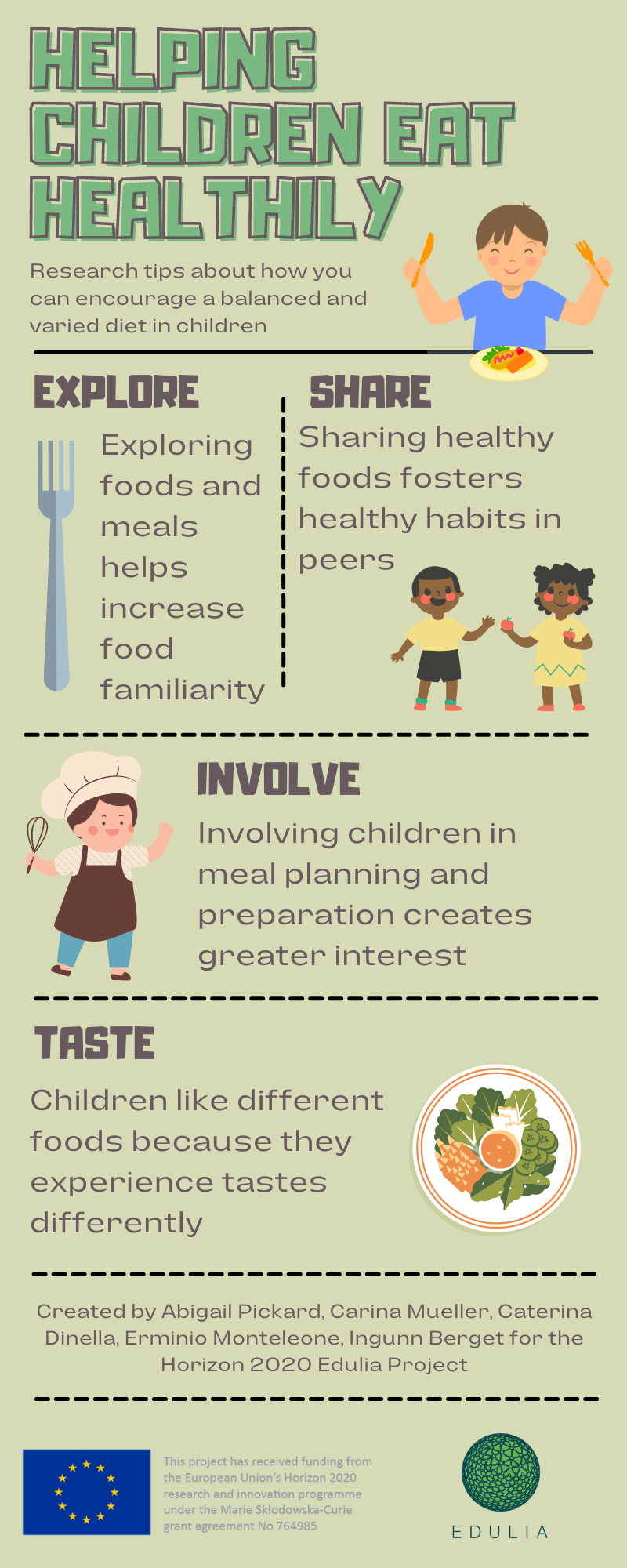Helping children eat healthy

Edulia’s main objective has been “bringing down barriers to healthy eating”. The idea is that we want children (and then later as adolscents and adults) to eat healthy by choice, not because they are told to.
Research by our ESRs show that
- Food familiarity is important to decrease food neophopia and food fuzziness
- Pickard, A., Thibaut, J. P., & Lafraire, J. (2021). Strawberries and Cream: The Relationship between Food Rejection and Thematic Knowledge of Food in Young Children. Frontiers in Psychology, 12. https://doi.org/10.3389/fpsyg.2021.626701s
- short summary here: New paper: Strawberries and Cream: The Relationship between Food Rejection and Thematic Knowledge of Food in Young Children – Edulia
- Peers can have a negative influence on pre-adolescents when it comes to healthy eating (they are more likely to influence their friends to try candy, soft-drinks and fast food than carrots and other vegetables)
- Ragelienė, T. and A. Grønhøj (2020), The influence of peers′ and siblings′ on children’s and adolescents′ healthy eating behavior. A systematic literature review. Appetite, 148: p. 104592. https://doi.org/10.1016/j.appet.2020.104592
- Ragelienė, T. and A. Grønhøj, (2020) Preadolescents’ healthy eating behavior: peeping through the social norms approach. BMC Public Health, 20(1): p. 1268. doi:10.1186/s12889-020-09366-1
- Sensory sensitivity, that is how intense a taste is perceived, can influence liking of foods
- Ervina, E., I. Berget, and V. L. Almli (2020), Investigating the Relationships between Basic Tastes Sensitivities, Fattiness Sensitivity, and Food Liking in 11-Year-Old Children. Foods, 9(9): p. 1315. https://doi.org/10.3390/foods9091315
- Ervina, E., Almli, V. L., Berget, I., Spinelli, S., Sick, J., & Dinnella, C. (2021). Does Responsiveness to Basic Tastes Influence Preadolescents’ Food Liking? Investigating Taste Responsiveness Segment on Bitter-Sour-Sweet and Salty-Umami Model Food Samples. Nutrients, 13(8), 2721. Retrieved from https://www.mdpi.com/2072-6643/13/8/2721
This infographic present some reasearch based advice on what parents and other adults can do to help children eat healthy (click the picture to open in a new tab).
ESR10, ESR2, ESR9, food familiarity, healthy eating, peers, pre-adolescents, sensory sensitivity
